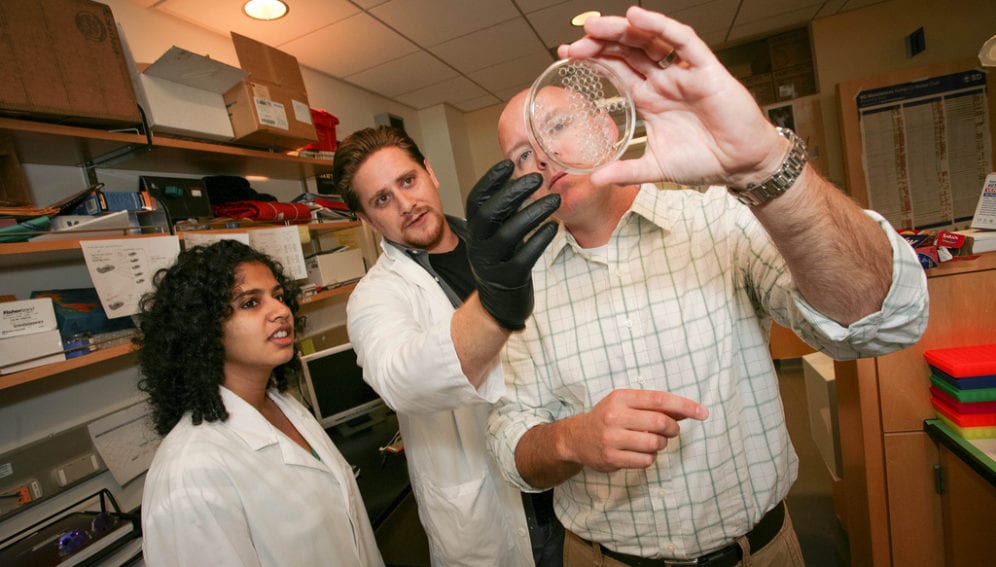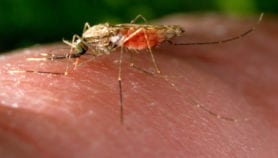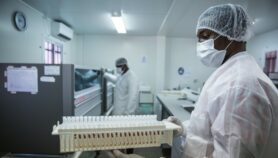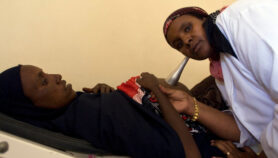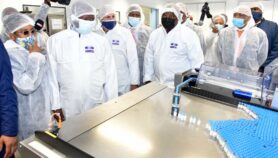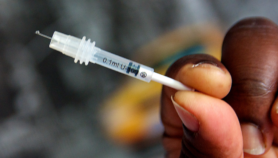By: Joshua Howgego
Send to a friend
The details you provide on this page will not be used to send unsolicited email, and will not be sold to a 3rd party. See privacy policy.
[LONDON] This year’s G-FINDER report on the state of funding for basic research into neglected diseases report had a positive headline message — in 2012 global funding for this research was up, bucking a trend of decline since 2009.
But the report is a rich source of data and some interesting trends emerged. For example the hoped for increase in funding from low- and middle-income countries did not materialise.
Perhaps more worrying, the report shows that funding for product development partnerships (PDPs) nose-dived by 20 per cent — or US$87.4 million — between 2011 and 2012.
After a spike in 2008 funding for PDPs has been steadily decreasing, with the most pronounced drop seen in 2012. Chart produced using Google Fusion Tables. Data source: G-FINDER report 2013.
This trend could be damaging to global health because PDPs are a big deal. In 2010 SciDev.Net reported that these groupings of public, private and philanthropic funders accounted for 140 drugs in the development pipeline. There have also been funds set up specifically to encourage PDPs because they are perceived as a useful way to spread the risks involved in drug research between different sectors; without them private companies would likely be less inclined to invest in neglected disease that have little viable market.
“PDPs have filled the pipeline, now we need to work together to bring those products to market.”
Anja Langenbucher, Gates Foundation
Much of the discussion at the report’s launch event in Westminster last week (11 December) focused on the decline in funding of these partnerships.
Nick Chapman, senior analyst at Policy Cures, the not-for-profit behind G-FINDER, said that there were complexities underlying the decline. For example, he said that some major grants to PDPs had been “front loaded” and so were naturally tailing off in value. In addition the WHO Special Programme for Research and Training in Tropical Diseases ceased its funding this year. It had previously provided US$30.6 million.
Even so “the trend is real” said Chapman. Over half of regular funders of PDPs froze or decreased their contributions between 2011 and 2012, the report shows.
But the reasons for this pattern weren’t clear though there was food for thought.
Too successful for their own good?
Timothy Wells, chief scientific officer at Medicines for Malaria Venture, a PDP, said it was possible that the partnerships could be a victim of their own success. “The danger is that funders will tell you: ‘you’re doing a great job — we’ve seen your pipeline full of drugs — you obviously don’t need so much money’,” he said.
Yet Anja Langenbucher, deputy director of the Bill and Melinda Gates Foundation, summed up the meeting’s mood when she said that PDPs will actually need more funding as many of their drugs exit the research pipeline and reach the product development stages.
“Now is not the time for funders to back away from this approach,” she said. “PDPs have filled the pipeline, now we need to work together to bring those products to market.”
From the sublime to the ridiculous
Another possible contributor to the funding decline could be confusion about international public health goals.
When the millennium development goals were put forward “things were done almost in a darkened room, with next to no consultation,” said Jon Pender, vice president of government affairs at pharmaceutical giant GlaxoSmithKline. This meant concrete health goals were created in the early 2000s that funders could unite around.
But things have gone “from the sublime to the ridiculous” he said, with “just so much” consultation over the post-2015 goals possibly confusing funders about what they should fund to tie in with emerging international aims.
To complicate things further, Chapman noted that most of the funding slowdown for PDPs related to their core funding — for overheads such as energy — with specific research projects maintaining relatively better financing.
But Langenbucher sounded a positive note, saying that it were details such as this that would help funders work out how to do things better. G-FINDER is so valuable because it shows funders how to improve what they are doing, she said.
Link to full report


